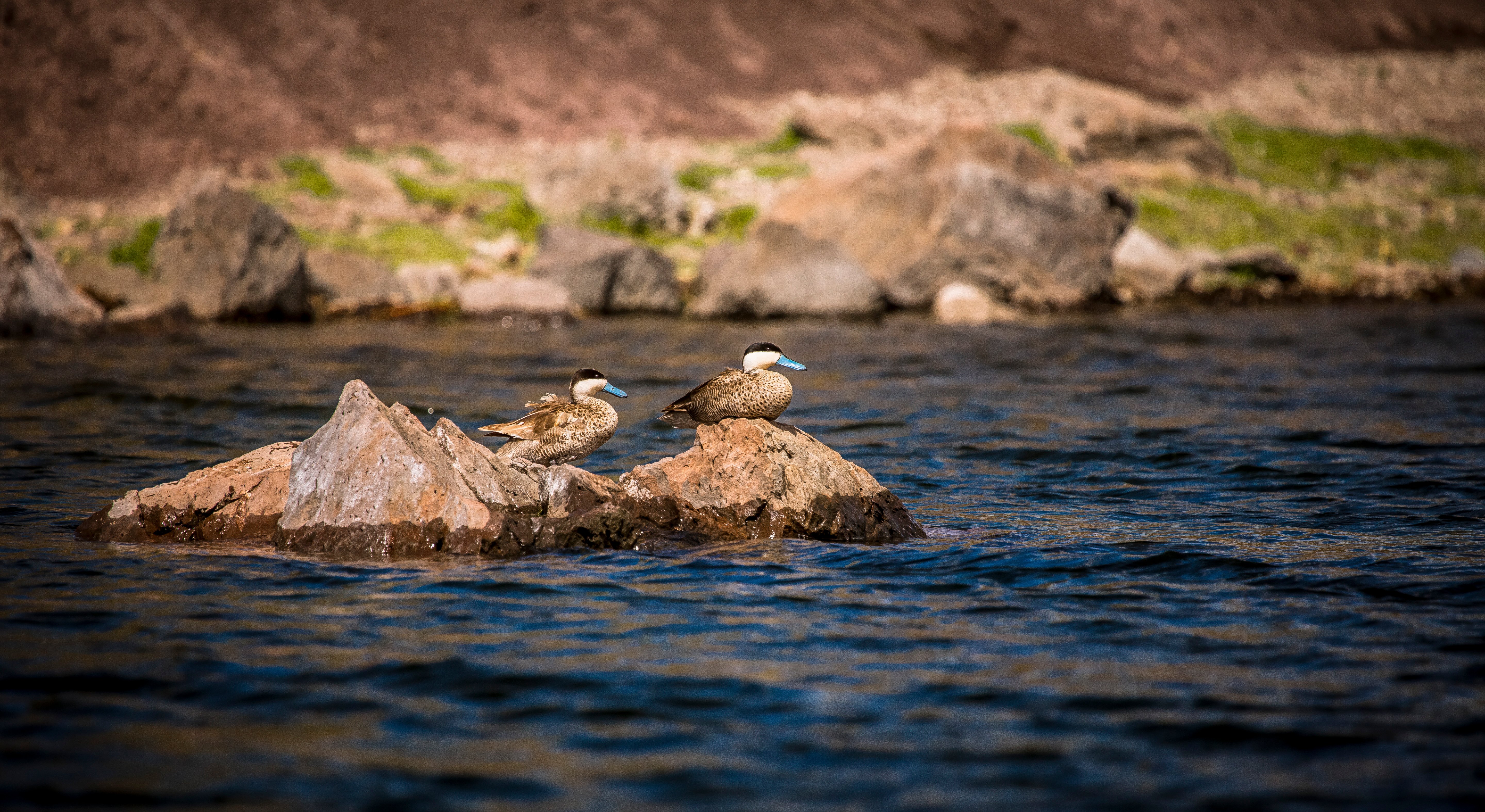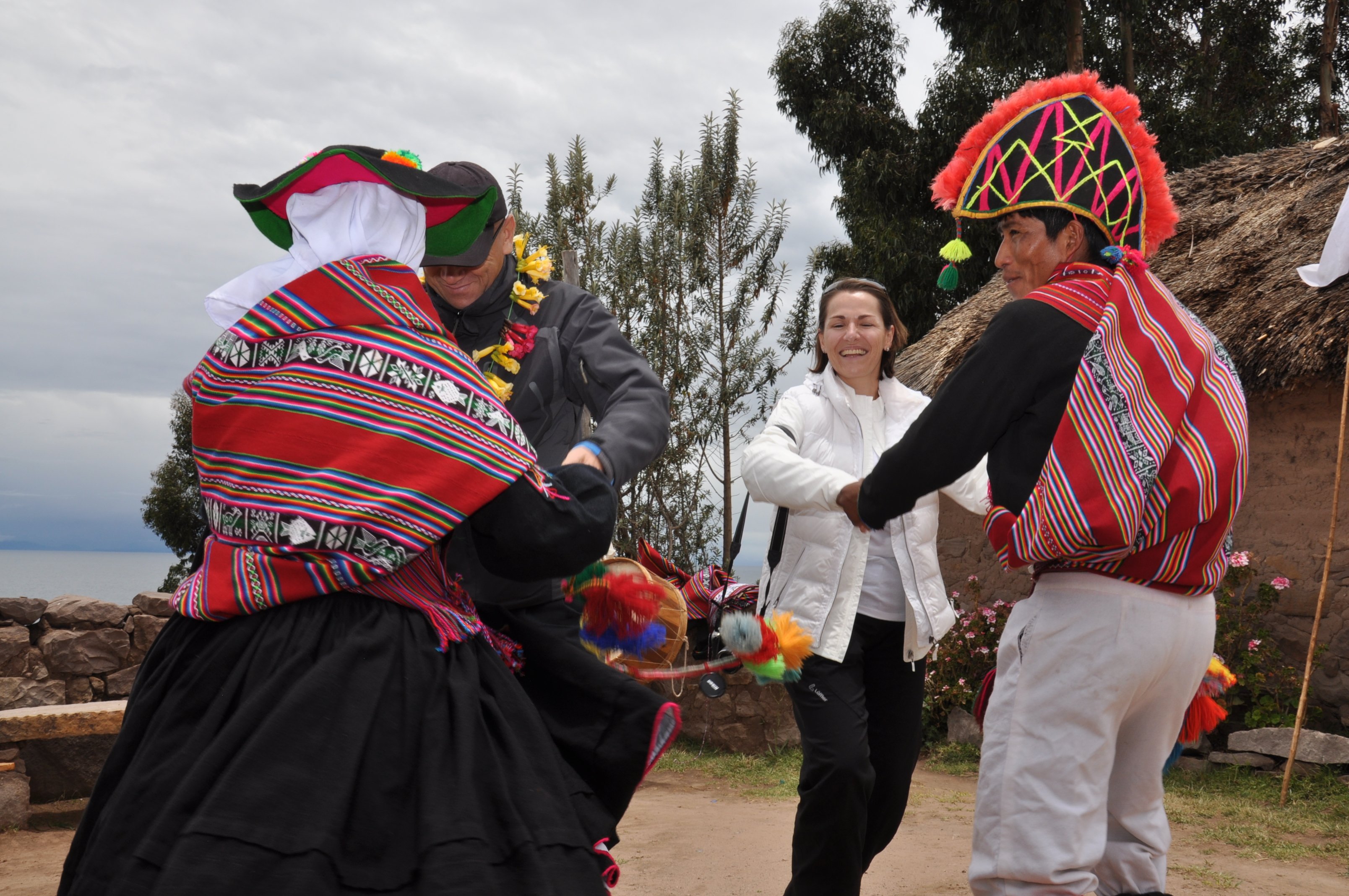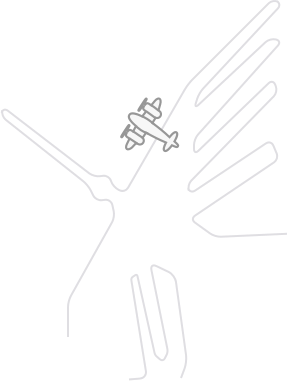In southern Peru, almost 4,000 meters above sea level, the Titicaca, an immense lake mirror, is home to warm communities that have found in experiential tourism the key to preserving their ancient customs. On this half-day trip, we visit Los Uros and the people of Taquile.
Starting from the port of Puno, 10 minutes away from the city centre, a boat takes us into the lake for 20 minutes. Channels demarcated by 'totora' appear -a vital aquatic plant here-, preparing us for the surprising image: a picturesque floating archipelago built based on the totora itself. Smiling women in colourful clothing receive us at the voice of "Kamisaraki" and "Waliki", Aymara terms for "How are you?" and "Welcome", and help us descend.
.%20Theyre%20built%20using%20the%20buoyant%20totora%20reeds_96802072.jpg?width=8290&name=floating%20Uros%20islands%20on%20the%20Titicaca%20lake%2c%20the%20largest%20highaltitude%20lake%20in%20the%20world%20(3808m).%20Theyre%20built%20using%20the%20buoyant%20totora%20reeds_96802072.jpg)
We sit on the fluffy surface and listen to Pablo, president of the island we visited, who explains the curiosities of living in the middle of Titicaca. In Uros, almost everything is made of totora. Its 100 islands, anchored to the bottom of the lake, are built on several meters of the roots of this plant, stacking the stems in braided layers that must be added every 15 days. The houses can maintain the ancestral conical structure ('chucllas') or a more modern one with a pitched roof, usually with a single room where the whole family lives.
He also tells us that there are different types of islands with restaurants, viewpoints, tourist accommodation, sports fields, medical posts, among others. They take advantage of sunlight with panels, and some even have an internet connection. The men dedicate themselves to the totora harvest, bird hunting, fishing and trade or barter with other towns; women are in charge of cooking, home care, visitor care and handicraft making.
After acquiring miniature versions of the reed boats representing how their ancestors lived, we headed to another island, a more commercial one. The arrival of the rain forces us to take shelter indoors, accompanying the wait with a coffee or an infusion - they recommend that of muña or coca for altitude sickness. In a well-stocked cellar, a local worker stamps our passports for one sol, the proof that we visited this place.

We continue the trip, sailing towards the Taquile Island, accompanied by chokas, keñolas and Andean ducks fishing and diving in the cold waters. Our guide explains that there are more than 100 types of birds in this area, and a dozen species of fish, including the endangered carachi and mauri. The sky is clearing until it discovers a bluish gradient and the radiant sun as if it has always been lighting up the vegetation that we are approaching.
We disembarked and started the walk of about an hour in search of the family that will welcome us. We follow a long stone road and pass under a curious arch that marks the beginning of each path to the centre of the island. Orchards and other flower fields are around us, next to some adobe houses that were built by the community. Formerly part of the Inca Empire, Taquile still maintains collective work as a social base. It is the only Quechua-speaking island of Titicaca, but after the conquer, it also adopted Spanish. We cross the island edges and take a moment to contemplate the beautiful panoramic view: it transmits peace and allows us to appreciate the natural beauty of this rural setting.

We arrive at the home of Aquiles and his family, where they offer us a delicious lunch with local ingredients. We are thankful for some of the best homemade bread we have ever tried. Quinoa soup is the starter, and fried trout with potatoes is the main dish, accompanied by a muña infusion that revitalizes us after the excursion.
The best comes later when they explain to us the peculiarities of their clothing, which contrasts with those of the neighbouring towns. Taquile takes its name from Pedro Gonzales de Taquila, whose court it belonged to in the 16th century. The Spanish imposed rural clothing, but this was merged with pre-Columbian elements: men wear a white shirt, vest, black pants, sash and a chullo that differentiates their status and marital status - red and white for singles and solid red for married people. On the other hand, women wear a red sweater, multicoloured skirts and sash and a black cloak.
But in Taquile, what stands out the most, besides the beautiful landscape, are the fabrics. Such is their importance and quality that they are a Masterpiece of the Oral and Intangible Heritage of Humanity by UNESCO and part of the Representative List of the Intangible Cultural Heritage of Humanity. Men knit with needles and women with pre-Hispanic looms. Among the garments, the calendar belt stands out, in which they represent annual agricultural cycles, elements of the oral tradition of the community and its history, and the belt that women prepare for their husband at the time of marriage, in which they incorporate their long hair between the strands of the fabric.

Next, a local woman demonstrates the use of natural elements for washing and preparing textiles. Then, she and the young people of the house perform a dance accompanied by the sounds of a bass drum and panpipes. They invite us to participate, and we join in the celebration, hoping to be up to the occasion.
Finally, we have the opportunity to take one of their beautiful chullos with us. With this, we say thank you for their attention and start the return to the nearby bay. Already on the boat, while looking at the horizon, we left behind a visit that, in just a few hours, transported us to another world, a peaceful one, that makes us appreciate the different human traditions and that proves the possibility of a life in harmony with the nature around us.


